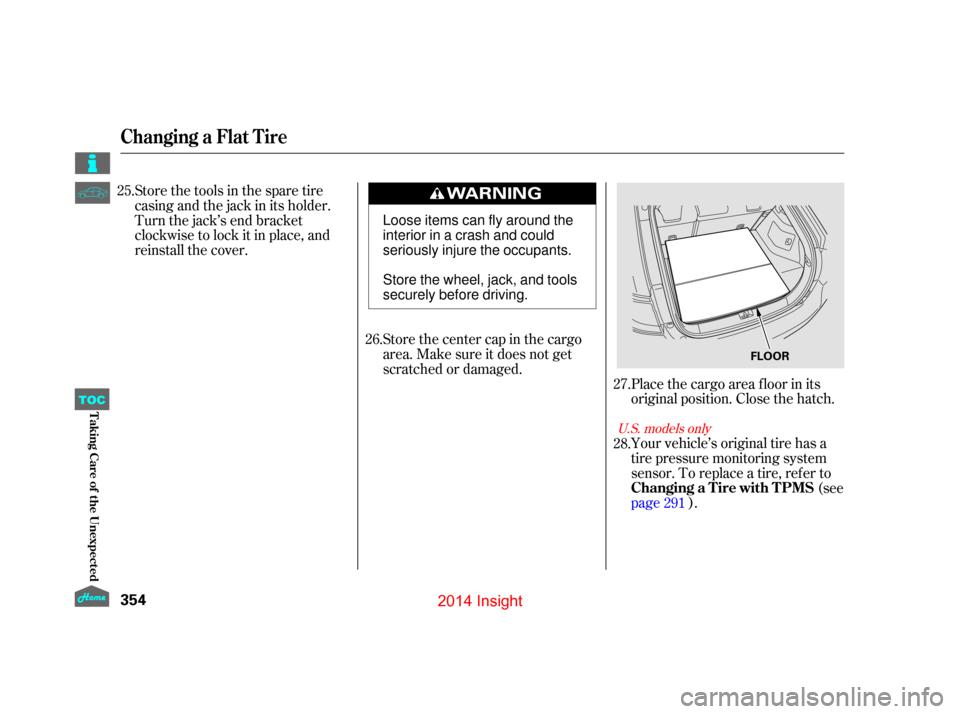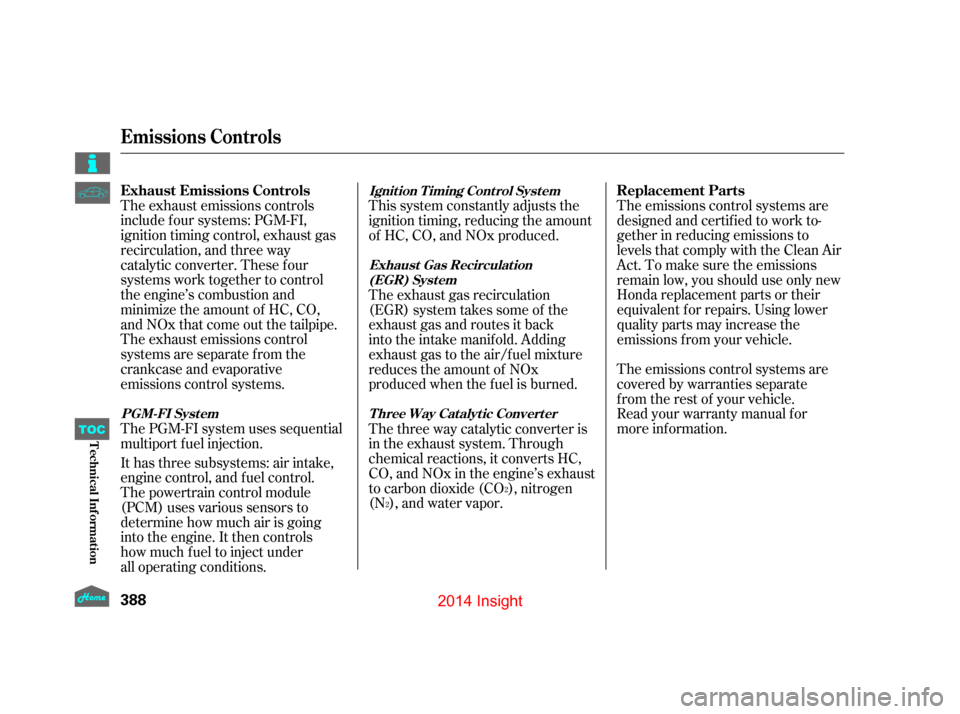Your vehicle’s original tire has a
tire pressure monitoring system
sensor. To replace a tire, ref er to(see
page ).
Store the center cap in the cargo
area. Make sure it does not get
scratched or damaged.
Store the tools in the spare tire
casing and the jack in its holder.
Turn the jack’s end bracket
clockwise to lock it in place, and
reinstall the cover.
Place the cargo area f loor in its
original position. Close the hatch.
25.
26.27.
28.
291
U.S. models only
Changing a Flat Tire
Changing a T ire with T PMS
354
FLOOR
Loose items can fly around the
interior in a crash and could
seriously injure the occupants.
Store the wheel, jack, and tools
securely before driving.
12/07/13 17:21:58 31TM8630_359
T aking Care of t he Unexpect edTOC
2014 Insight
The exhaust emissions controls
include four systems: PGM-FI,
ignition timing control, exhaust gas
recirculation, and three way
catalytic converter. These four
systems work together to control
the engine’s combustion and
minimize the amount of HC, CO,
and NOx that come out the tailpipe.
The exhaust emissions control
systems are separate from the
crankcase and evaporative
emissions controlsystems. The emissions control systems are
designed and certif ied to work to-
gether in reducing emissions to
levels that comply with the Clean Air
Act. To make sure the emissions
remain low, you should use only new
Honda replacement parts or their
equivalent f or repairs. Using lower
quality parts may increase the
emissions f rom your vehicle.
The emissions control systems are
covered by warranties separate
from the rest of your vehicle.
Read your warranty manual for
more inf ormation.
The PGM-FI system uses sequential
multiport f uel injection.
It has three subsystems: air intake,
engine control, and fuel control.
The powertrain control module
(PCM) uses various sensors to
determine how much air is going
into the engine. It then controls
how much fuel to inject under
all operating conditions. This system constantly adjusts the
ignition timing, reducing the amount
of HC, CO, and NOx produced.
The exhaust gas recirculation
(EGR) system takes some of the
exhaust gas and routes it back
into the intake manifold. Adding
exhaust gas to the air/fuel mixture
reduces the amount of NOx
produced when the fuel is burned.
The three way catalytic converter is
in the exhaust system. Through
chemical reactions, it converts HC,
CO, and NOx in the engine’s exhaust
to carbon dioxide (CO ), nitrogen
(N ), and water vapor.
2
2
Exhaust Emissions Controls Replacement Parts
PGM-FI SystemIgnit ion T iming Cont rol Syst em
Exhaust Gas Recirculation (EGR) System
Three Way Catalytic Converter
Emissions Cont rols
388
12/07/13 17:26:17 31TM8630_393
Technical Inf ormationTOC
2014 Insight

